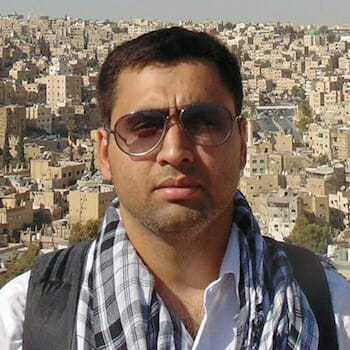
Syria Falling Prey to Turkey Expansionist Policy
Turkey and the United States have agreed on the creation of a buffer zone in northern Syria in areas controlled by Syrian Kurdish forces. Details of the agreement remain sketchy but roughly it has been agreed that the area will be controlled by Turkey. To facilitate the process, the U.S. and Turkey will establish a joint command and control centre in the area. According to Turkish Defence Minister Hulusi Akar, the command post will be operational within the next few days. Syrian Kurds rightly fear that this buffer zone is being carved out by Ankara just to expel them from the region which they liberated after a tough fight with ISIS.
The Kurds believe that this is also strengthened by the past behaviour of the Turks especially in January 2018 when the Turkish army attacked the Kurdish controlled town of Afrin. Syrian Kurds have been regularly targeted by Turkey through regular shelling of Kurdish positions and military campaigns like Euphrates Shield and Olive branch. Syrian Kurds are on the top of the Turkish hit list as they are the major obstacle in Ankara’s expansionist policies in Syria. Since the beginning of the Syrian conflict, Turkey tried to instrumentalize the Syrian war to further its own agenda.
Turkey justifies its fierce hostility to Kurdish forces by arguing that Kurdish-controlled regions in northern Syria are terrorist dens and shelter the outlawed Kurdistan Workers’ Party (PKK) which has launched a guerrilla campaign against Turkey since the 1980s. However, the Turks failed to provide any evidence that the Kurds have launched any terror attacks from Syria. A cursory look at the size and strength of the forces on each side of the border also clearly illustrates that Turkey is well capable of securing itself from any potential threats from Syrian Kurdish-led forces or the PKK. The concentration of Turkish troops on the Turkey-Syrian border is close to an army corps size and includes two armored brigades, two mechanized brigades, and two commandos’ brigades. On the Syrian side of the border, there is nothing that can militarily match such a big formation of troops.
Turkey’s border regions with Syrian territory east of the Euphrates River are already heavily secured and militarized and have been for years. So, it is near to impossible that the PKK is launching or can launch an attack from Syrian soil on Turkey. Moreover, Syrian Kurdish forces lack any heavy weaponry that could seriously threaten Turkey. Turkey, on the other hand, can easily devastate Kurdish positions or troop formations across northeast Syria with artillery and fighter jets without sending a single soldier or tank over the border. Most of Syrian Kurdistan’s major cities sit directly on the Turkish border and are, therefore, extremely vulnerable to any Turkish attack or bombardment. So, it’s the Syrian Kurds who are threatened by Turkey and not the other way around.
So, what are the real reasons for the creation of this buffer zone by Turkey. Firstly, it’s a case of an outright land grab by Turkey. Also, in its previous operation in Afrin, Turkey engaged not in counter-terrorism but in ethnic cleansing. This buffer zone would give Turkey control of most Kurdish governed towns and cities like Qamishli, Kobane, Amudeh, Malikiyah, Ain Issa, and Manbij and eventually the Kurds could be forced out of these cities/towns and a pro-Turkish population can be assured. Secondly, Turkish President Erdogan wants a military campaign to distract Turks from his own failings. Turkey’s economy is teetering and Erdogan’s repeated losses in recent elections has further shaken confidence in the leader. The best way to enhance his strong leader image is to launch a military incursion or increase tension with the Kurds. Lastly, the vast majority of Syria’s oil resources would also fall in the “buffer zone” that Turkey seeks to occupy and control. In effect, what Turkey seeks is not only the expulsion of Syrian Kurds from the buffer zone but possession of the oil reserves that this area sits over.
The Ottoman Empire was a global power that, at its peak, controlled vast areas of territory in the modern Middle East, North Africa, the Caucasus and the Balkans before its ultimate dissolution after the First World War. The foreign policy of its successor, the Turkish Republic has in recent years resembled as an attempt to increase Turkish influence in the regions of the former empire and especially in the immediate neighbourhood. Ankara’s neo-Ottoman approach in the region has been clearly visible through its engagement in the Syrian conflict after 2011.
All of Turkey’s strategic targets and demands since the start of the Syrian conflict like the ousting of the Assad regime, preventing a Kurdish autonomous region, declaration of a no-fly zone, creating a buffer zone along the eastern part of Euphrates River, and protecting radical Islamist groups in Idlib, have been a part of this approach. Erdogan statements in which he often questions the Lausanne Treaty are a Turkish desire to redraw the map and reshape the Middle East in his favour. To this end, he is not interested in a sustainable peaceful solution in Syria. The U.S. has to realise this sooner than later. The Syrian Kurds are valuable partners in America’s efforts to fight ISIS and contain Iranian influence. Washington should not allow them to fall prey to Turkish ambitions.

